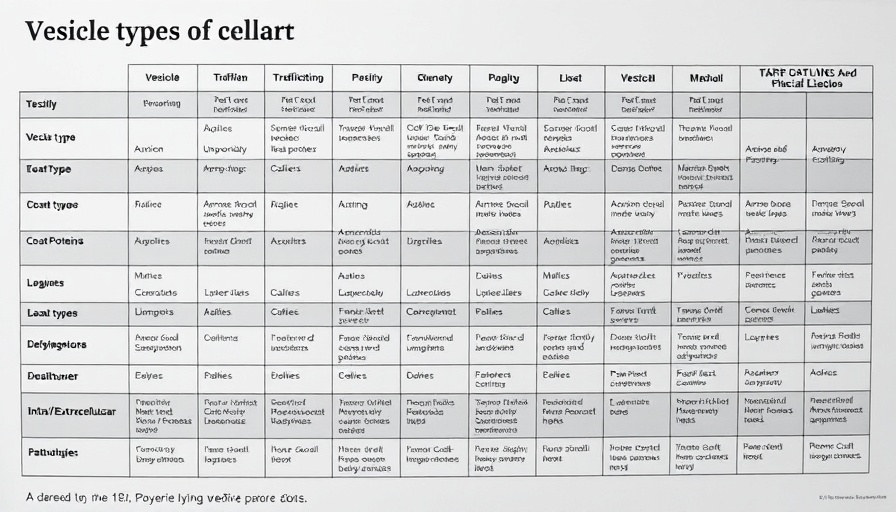
Understanding the Importance of Vesicular Trafficking
Vesicular trafficking might not be part of common vernacular, but its importance in maintaining cellular health cannot be overstated. In the context of neurodevelopment and neurodegeneration, vesicular trafficking ensures that essential materials like proteins and hormones are delivered to the right locations within neuronal cells. This is particularly critical within the central nervous system, where a delicate balance of cellular communication exists between neurons, glial cells, and progenitor cells. Disruption in this process can lead to catastrophic consequences, affecting brain development and cognitive function.
Cell Communication and Its Role in Neural Function
The implications of vesicular trafficking extend beyond mere transportation; it is foundational for effective cell-cell communication. Synaptic vesicles, for instance, are vital for neurotransmitter release, facilitating communication across synapses. Any dysfunction in this relay can lead to debilitating conditions, such as Alzheimer's and Parkinson's diseases. With neurons being high-energy-demand cells, efficient vesicular transport acts as a linchpin for their survival and function.
Linking Cellular Rejuvenation to Optimal Vesicle Function
For health-conscious individuals, the relationship between vesicular trafficking and cellular health may shine a light on new avenues for rejuvenation strategies. Enhanced vesicular transport is crucial for maintaining cellular integrity and promoting autophagy—the body's method of cleaning out damaged cells. Procedures and therapies, such as stem cell therapy, aim to optimize this trafficking process, balancing cellular repair mechanisms with the rejuvenation of degenerative cell populations. Thus, investing in cellular health might ultimately stave off aging processes in the brain.
Future Directions: Exploring Regenerative Medicine
The growing interest in regenerative medicine has provided a compelling framework to study vesicular trafficking. Techniques focusing on NAD+ boosters promise to enhance mitochondrial function, further illustrating the interconnection between cellular energy metabolism, vesicle function, and longevity. There is a pressing need for research that delineates the biological mechanisms facilitating cellular repair and their applications in reversing senescence. By addressing these challenges, we may not only combat age-associated cognitive decline but also revitalize youthfulness at the cellular level.
Conclusion: Take Charge of Your Cellular Health
As our understanding of vesicular trafficking deepens, so does the potential for harnessing this knowledge to impact health positively. With tools and insights into enhancing cellular rejuvenation now within reach, it’s an ideal moment for health-conscious individuals to explore options that can bolster their vitality. Whether through enhanced dietary protocols or emerging therapies, keeping up with these advancements can significantly support procedural success in cellular repair and rejuvenation.
 Add Row
Add Row  Add
Add 




 Add Row
Add Row  Add
Add 


Write A Comment